Bézier Curves: Maths Shaping Our Digital World
Did you ever wonder at the silky smooth of digital curves or the sleekness of a car’s body?
You were probably looking at something created by Bézier curves, even if you didn’t know it. This mathematical miracle has changed computer graphics, industrial design and animation – yet hardly anyone knows what they are.
Let’s dive into the intriguing world of Bézier curves: their origins, uses, and the maths behind them. By the end of this piece, you’ll see these elegant curves in places you never saw them before!
- Bézier curves, developed by Pierre Bézier, revolutionised digital design by enabling precise and flexible representation of curves and shapes.
- They are essential in graphic design and animation, ensuring scalability and smoothness in logos, typefaces, and character movements.
- Their mathematical foundation, primarily based on control points and Bernstein polynomials, allows for easy manipulation and complex designs.
The Birth of Bézier Curves: A Tale of Cars and Computers
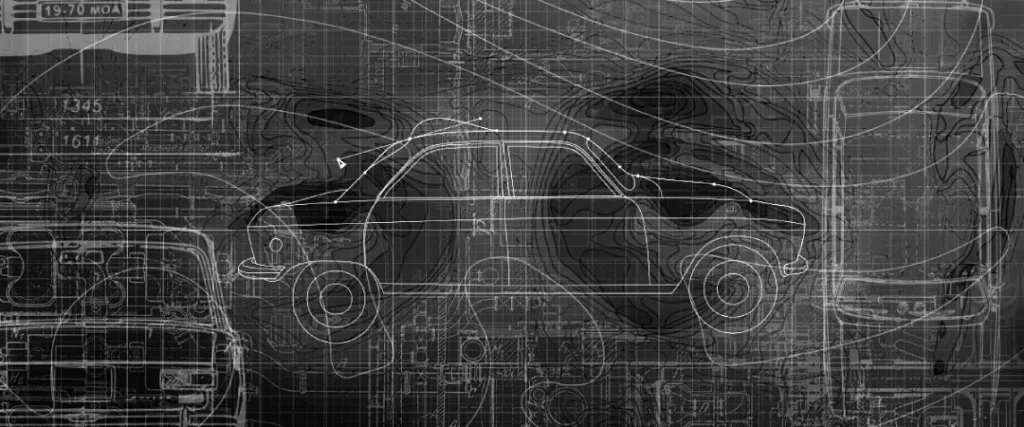
Imagine this—the 1960s were alive with the sound of innovation in the automotive industry. Enter Pierre Bézier, a French engineer employed by Renault. His goal was to make vehicle design more efficient, but he didn’t know that he would also forever change the face of digital graphics.
From pencil to pixel
Bézier wasn’t satisfied with the old-fashioned ways of designing car bodies. The process was slow, rigid and error-prone. He wanted a method for mathematically describing complex curves so they could be easily modified and controlled precisely.
He devised a clever scheme involving control points that can define smooth continuous curves. These curves – named after him – allowed designers to create and adjust complex shapes like never before.
The dawn of computer graphics
At the same time as Bézier was revolutionising car design, computer graphics was finding its feet. As computers grew more powerful, there was an increasing need for efficient methods of representing curves and shapes digitally.
It turned out that Bézier curves were just what the doctor ordered: compactness combined with easy manipulation made them capable of representing all sorts of shapes well. Before long, these mathematical constructs had become foundational in CAD software; they were already widely used by vector graphic programs or animation tools when such things became popularised.
The Magic of Bézier Curves: How Do They Work?
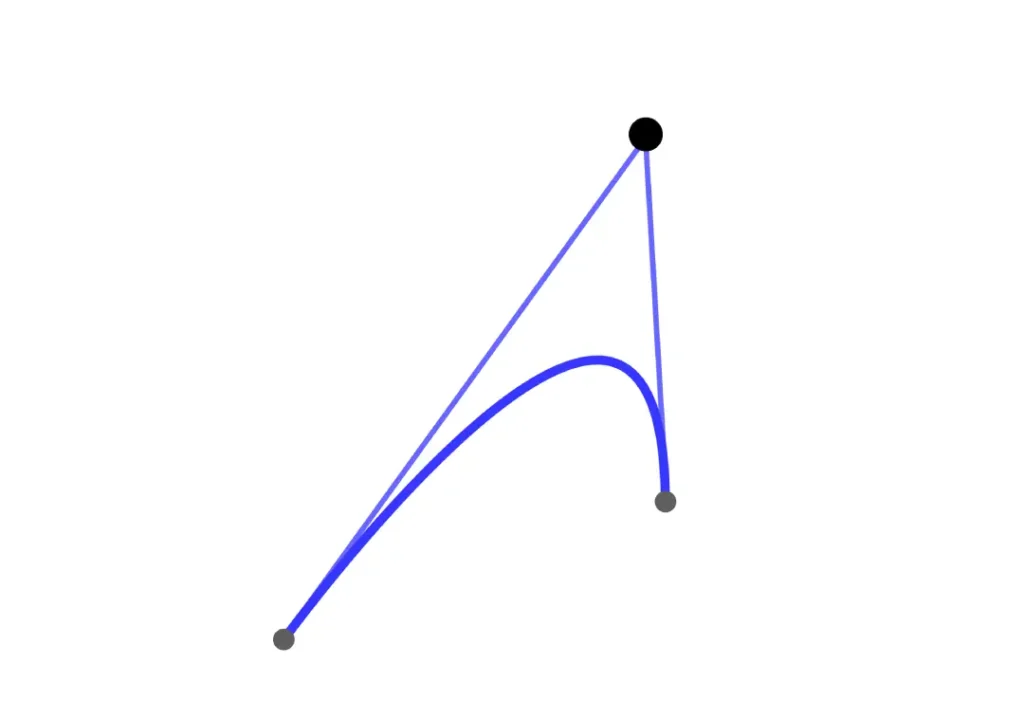
Now, let’s get to the heart of Bézier curves. Don’t worry if you’re not a math genius; I’ll explain it simply.
Control Points: The Puppet Masters
Imagine you are a puppeteer controlling a curve instead of a marionette. Strings connect to this curve from particular points called control points. Although these points don’t necessarily lie in the curve itself, they have some magic ability that controls its shape.
A Bézier curve begins at the first control point and ends at the last one; the others in between behave like magnets, pulling but never touching it. This is what creates smoothness in Bézier curves – this give and take.
The Bézier Curve Family: From Simple to Complex
Bézier curves come with different numbers of control points and can be classified as follows:
- Linear Bézier curves – these are simply straight lines joining two points;
- Quadratic Bézier curves – these possess three control points and, therefore, create simple curves;
- Cubic Bézier curves – the most commonly used type since it has four control points that provide enough flexibility while remaining computationally cheap enough;
- Higher Order (HO) Bézier Curves – require at least five or more CPs enabling complex shapes but demanding higher computational power, so less popular than cubics for general use cases, especially when dealing with large amounts of data like 3D modelling, etcetera.
Mathematical Heart of Bézier Curves
At their core, Bézier curves are driven by a mathematical formula called Bernstein Polynomials (BP). However, you should not fear this name because it’s just an algorithm for blending different influences represented by each of those said CPs into one outcome referred to here as ‘the final curve’.
Bézier Curves in Action: Real-World Applications
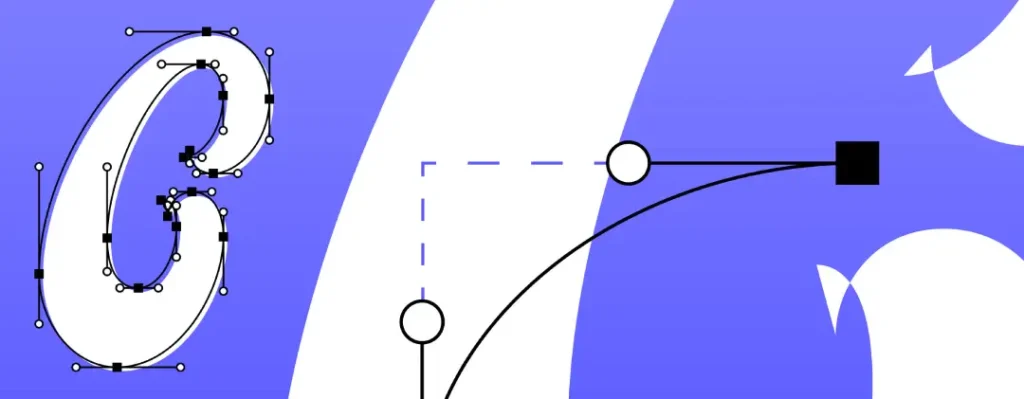
After understanding what Bézier curves are and how they operate, let us look at some fantastic applications of these curves in real life. You may be surprised by their ubiquity!
Graphic Design: The Vector Revolution
If you’ve ever used Adobe Illustrator or Inkscape, among similar programs, you have unknowingly worked with Bézier curves. These vector graphics editors are built on Bézier curves as their primary components.
Creating Scalable Graphics
One thing that makes Bézier curves very useful in graphic design is scalability. Unlike bitmap images that become pixelated upon enlargement, vector graphics that rely on Bézier curves can be resized to any dimension without losing quality – perfect for logos, illustrations, etc., which must look sharp at any resolution.
Crafting Custom Typefaces
Bézier curves are an indispensable tool in designing fonts for typography lovers everywhere. Digital typefaces represent each character with smooth lines made up of Bézier curve segments; this enables designers to create beautifully intricate letters that render well at any size.
Animation: Bringing Characters to Life
The art of animation owes much of its evolution to Bézier curves, which have revolutionised 2D and 3D animation by making movements more natural and fluid.
Keyframe Animation
In keyframe animation, a few crucial poses (keyframes) are defined for an object or character before letting software fill in the rest through interpolation using Beziér Curves; this results in seamless, lifelike motion over time.
Motion Paths
Once again, when it comes to animating the trajectory of objects, bezier curves prove pretty handy since they allow the creation of paths with complex shapes while still maintaining smoothness, e.g., bouncing ball or flying rocket ship).
Industrial Design: From Cars to Consumer Products
Remember Pierre Bézier and his work at Renault? Well, his idea about using mathematical functions or formulae (curves) for shaping car bodies has now become a standard practice in the automotive industry and other fields like product design, etc.
Automotive Design
The power behind modern automobile shapes lies primarily in complex combinations of bezier curves, which enable designers to achieve sleek aerodynamic forms that are pleasing to the eye and efficient in terms of function.
Product Design
Bezier curves help design cars and can be applied anywhere! From smartphones to kitchen gadgets, these mathematical wonders find their way into various aspects of industrial design, allowing for the creation of ergonomic, user-friendly products where every bend counts.
Web Design: Smooth Scrolling and Animations
Even within web development circles, bézier curves remain relevant through smooth scrolling features, among others aimed at enhancing user experience when navigating digital content.
CSS Animations
In CSS animations, developers employ bezier curves as timing functions, giving a more natural look during transitions or other visual effects, thus making sites/applications more lively.
SVG Graphics
Scalable Vector Graphics (SVG) is a widely used web format for graphics which happens to be based on… yes, you guessed right! Bézier Curves. With this feature integrated into browsers, it becomes possible to create detailed scalable icons/illustrations that always appear sharp regardless of the device used.
The Maths Behind the Magic: A Deeper Dive
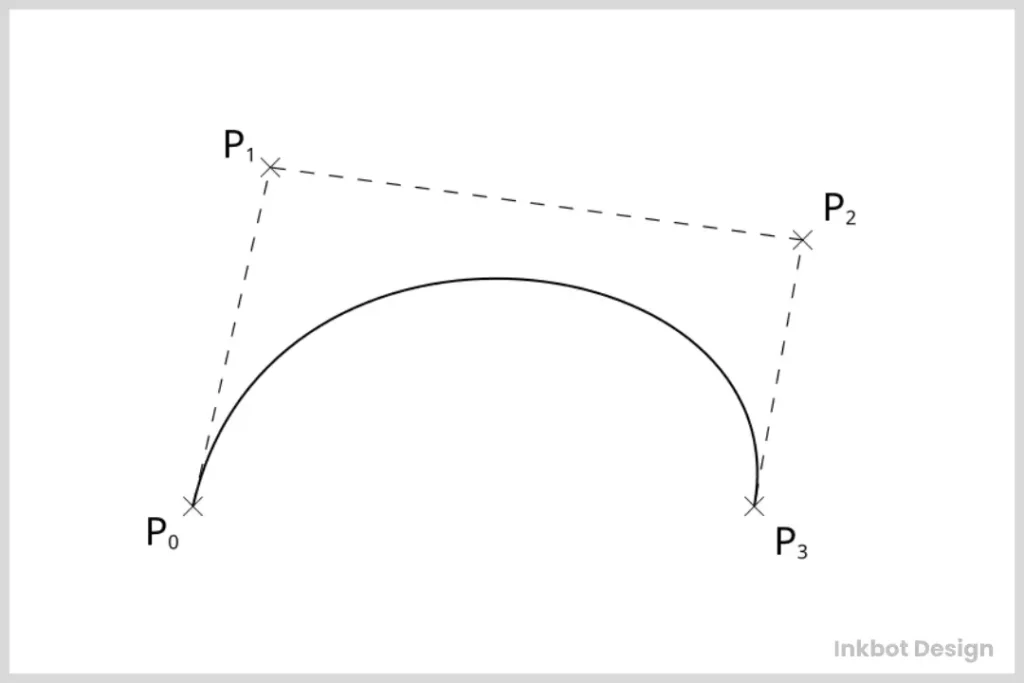
Since we learned how flexible and significant Bézier curves are, let’s examine the mathematical principles that also govern their functioning. But don’t worry – I promise to make everything as clear and straightforward as possible!
The Formula of the Bézier Curve: Simplifying It
Essentially, a Bézier curve is described by a parametric equation. This might sound scary, but it simply means we use one variable (usually called t) to represent each point on the curve.
For a cubic Bézier curve (the most common form with four control points), the formula is:
B(t) = (1-t)³P₀ + 3(1-t)²tP₁ + 3(1-t)t²P₂ + t³P₃
Where:
- B(t) is a point lying on the curve
- t is a variable ranging from 0 to 1
- P₀, P₁, P₂, and P₃ are the control points
Understanding the Formula: Step-by-Step Guide
Let’s break down this formula into smaller bits that are easier to understand:
- When t = 0, we’re at the beginning of the curve (P₀).
- When t = 1, we’re at the end of the curve (P₃).
- For any value of t between 0 and 1, we calculate a weighted average of all four control points.
These weights change as t changes, thus forming a smooth curve.
The De Casteljau Algorithm: A Geometrical Method
Although mathematically elegant, the above formula sometimes can fail to provide an intuitive perception of Bézier curves. That’s why the De Casteljau algorithm comes into play – it allows for the geometric construction of these curves.
This is how it works:
- Take your control points.
- Divide every line segment between them in proportion t:(1-t), where t is given.
- Join newly obtained points.
Repeat the process for shorter line segments created in the previous step until you get one point left. That point lies on the Bézier curve.
It may sound complicated, but once you visualise it, you will see nothing more beautiful and intuitive than that. It’s like watching a dance where the control points give birth to the curve!
Bézier Curves vs Other Curve Types: A Comparison
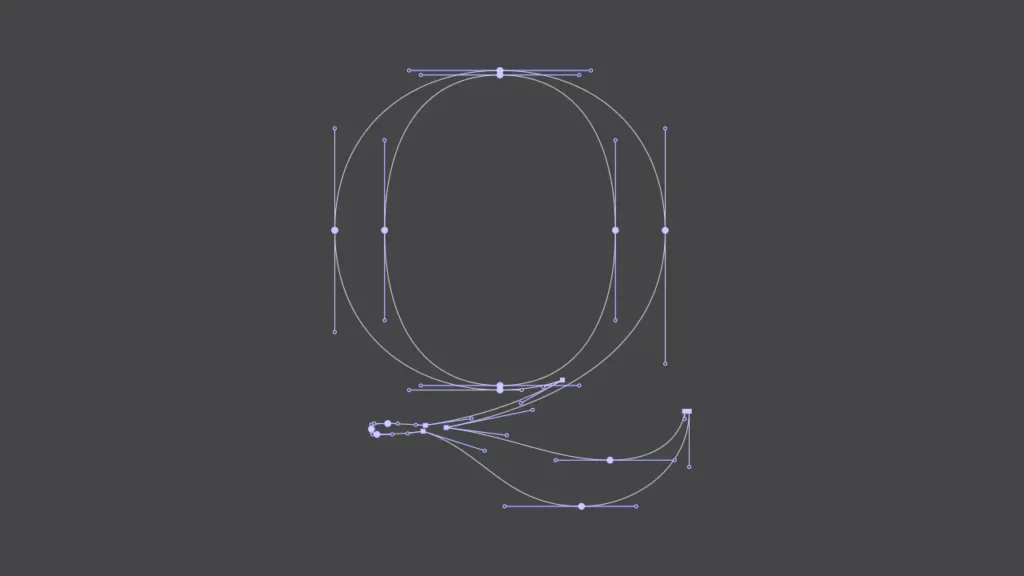
Curves may be represented mathematically in more ways than just Bézier curves. What we can do is contrast them with some other popular types of curves.
Splines: Almost the same thing
Splines are another set of curves used in computer graphics and design. They have much in common with Bézier curves, but there are a few key differences:
In general, splines are defined piecewise; they are made up of several curve segments that are joined together.
This means you have greater control over the shape of the curve as a whole by being able to adjust one segment independently from any others.
But it also means ensuring smooth transitions between segments can be trickier with splines.
NURBS: All grown up
Non-uniform rational B-splines (NURBS) are a more powerful form of curve used in 3D modelling and computer-aided design.
Almost everything about NURBS is even better than what you get with regular splines or Bézier curves if it’s control over the shape that interests you most.
For example, they can represent more shapes — like perfect circles or ellipses.
The tradeoff is that NURBS come at a higher mathematical and computational cost, which makes them less appropriate for simple applications where this level of detail isn’t necessary anyway.
Why Do We Still Use So Many Béziers?
Even though plenty of other options are available, bezier remains incredibly popular. Here’s why:
- Simplicity: They’re relatively easy to understand and implement.
- Efficiency: Less computational power is needed compared to other complex curve types
- Flexibility: Can represent many different shapes while staying easy to work with
- Smoothness: For many design purposes, the inherent smoothness property is critical
Mastering Bézier Curves: Tips and Tricks
Now that we’ve covered the theory let’s dive into some practical tips for working with Bézier curves. Whether you’re a graphic designer, a web developer or just a curious learner, these tricks will help you make the most of this flexible curve.
1 – Control Point Placement
The placement of control points is what creates the curve. Here are some rules to follow:
- If you want a tighter curve, then move your control points closer to each other.
- Moving them further apart if you want a looser, more gradual curve.
- A sharp corner can be created by aligning three control points.
2 – Smooth Curves with Symmetry
If you want your curves to be perfectly smooth (without any kinks):
Place the second and third control points symmetrically around the line connecting the first and fourth points.
Doing so ensures continuous curvature along this part of our design, which is ideal for many design applications.
3 – Pen Tool Mastery
In most vector graphics software, you create Bézier curves using the pen tool. These few things might come in handy as nicely:
- To create curved segments, click and drag using your selected pen tool.
- Hold down the shift key while dragging so that it constrains control point handles at 45-degree angles relative to each other (this is useful when creating circular shapes)
- Practice makes perfect: don’t worry if this seems complicated at first because once mastered, the pen tool becomes an invaluable asset for any illustration designer!
4 – Joining Multiple Bézier Curves Together
Sometimes complex shapes require multiple bézier curves joined together; here’s how to do it smoothly:
Ensure that their corresponding pairs have collinear controls (aligned straight) on either side of where they meet up. This will ensure no sudden change occurs between one curve’s directionality & another’s, which would otherwise cause irregularity within our object shape representation.
5 – Animation Timing with Bézier Curves
When using bézier curves as animation timing functions:
- A linear curve (straight line) creates constant speed.
- An ease-in effect: this can be achieved by making a curve rise sharply after starting flat.
- An ease-out impact can be produced if the curve rises steeply and then flattens towards its end.
- An ease-in-out effect: an s-shaped curve does this – where it gradually accelerates at first before finally decelerating towards completion
The Future of Bézier Curves: What’s Next?
Thinking about what lies ahead, it is evident that Bézier curves will remain vital in digital design. Nevertheless, what are these new ideas or uses?
3D Printing Improvements
Currently, as the technology of 3D printing keeps on advancing, it becomes more significant to use Bézier curves in creating accurate prints of complicated organic shapes. New programs may be developed to create three-dimensional objects using Bézier curves that can be printed.
Virtual Reality (VR) and Augmented Reality (AR)
Virtual reality and augmented reality depend on graphics that are not only efficient but also scalable. Based on their compact representation and smooth scalability, Bézier curves cannot fail to contribute significantly towards establishing an environment surrounding players while playing VR/AR games.
Machine Learning with Bézier Curves
We have already begun witnessing some exciting ways through which artificial intelligence has been combining machine learning together with béziers, such as:
- Algorithms capable of producing béziers automatically so that they match hand-drawn sketches.
- AI systems that optimise where control points should be placed, thereby coming up with curves whose representation is efficient.
Novel Mathematical Discoveries
Mathematicians still delve further into investigating properties exhibited by béziers alongside other related concepts. For this reason, we might expect to encounter different types of curves or improved algorithms meant to handle them better later on.
Conclusion: The Enduring Legacy of Bézier Curves
As we end our deep dive into Bézier curves, it’s easy to see that these mathematical wonders are here to stay. They have impacted every facet of our digital world, from the vehicles we drive to the fonts we read. Our entertainment comprises them – animations; our living standards shaped by them – product designs.
But what makes them so elegant? It’s not just about their beauty in mathematics; it’s about how useful they can be. Bézier curves combine simplicity with power, allowing designers and engineers to create complex shapes organically while maintaining control over them.
With that being said, where do you think Bézier will go from here? The possibilities are endless! One thing is sure, though: these crafty lines will forever remain essential tools in any digital designer’s arsenal. So keep that sleek car design, logo creation, or even tablet doodle in mind next time because there may be some magic behind those bezier points!
They prove math can transform our visual world into something unexpected and beautiful.
Frequently Asked Questions
What is a Bézier curve?
A Bézier curve is an algebraic curve widely used in computer graphics and related fields. It can be defined by a set of control points that do not need to be on the curve.
Who discovered Bézier curves?
The French Engineer Pierre Bézier invented them at Renault in the 1960s, where he worked on car body design.
How does a spline differ from a Bezier curve?
Spline and Bezier curves are used to create smooth curves, but splines consist of multiple curved segments joined together with additional local control. On the other hand, a single mathematical function defines each bézier curve.
Can you make perfect circles using bézier curves?
Although they can come close, you cannot create exact circles with standard bézier curves. More sophisticated types, such as NURBS, would be required if one needs genuine circles.
Where do we use bezier curves in typography?
Digital typefaces employ these mathematically defined lines as character shapes at any scale while still appearing smooth.
What do bézier curves have to do with vector graphics?
Programs that create images using vectors instead of pixels love to employ Bézier Curves since they permit the creation of scalable figures that are resolution-independent.

